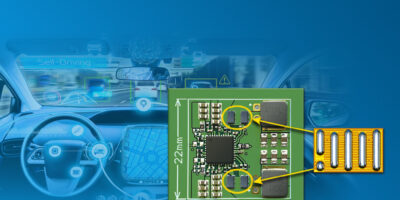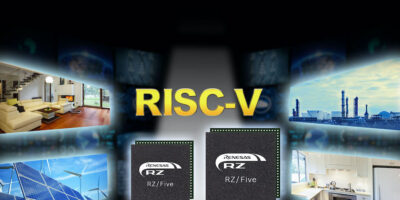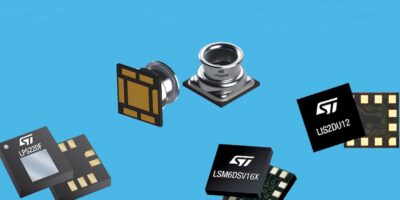The EPC9160 reference design uses EPC’s enhancement mode GaN FET, the EPC2055, with Analog Devices’ LTC7890 two-phase analogue buck controller with integrated GaN drivers.
The two companies collaborated in the development of the reference design which delivers up to 2MHz switching frequency for the highest density DC/DC converters using GaN FETs, claimed EPC.
The EPC9160 dual output synchronous buck converter reference design board converts an input voltage of 9.0 to 24V to a 3.3 or 5.0V output voltage and delivers up to 15A continuous current for both outputs. The high switching frequency ensures the converter size is small, with dimensions of 23 x 22mm for both outputs. The height of the inductor is 3.0mm.
The high density and thickness of the design, together with the 2MHz switching frequency make the EPC9160 suitable for automotive console applications, where 2MHz switching frequency is preferred, advised EPC. It can also be used in computing, industrial, consumer and telecomms power systems which require a small size and a very thin profile. According to EPC, eGaN FETs provide the fast switching, high efficiency and small size that can meet the stringent power density requirements of these leading-edge applications.
The LTC7890 100V, low Iq, dual, two-phase synchronous step-down controller is fully optimised to drive EPC eGaN FETs and integrates a half bridge driver and smart bootstrap diode. In addition, it offers optimised near-zero deadtime or programmable deadtime and programmable switching frequency up to 3MHz. The quiescent current of 5 microA (Vin = 48V, Vout = 5V, CH1 only) enables very low standby power consumption and light load efficiency, EPC said.
The EPC2055 40V eGaN FET offers 3mOhm max RDS(on), 6.6nC QG, 0.7nC QGD, 1.3nC QOSS and zero QRR in a 2.5 x 1.5mm footprint. It can deliver up to 29A continuous current and 161A peak current. The dynamic parameters allow very small switching losses at 2MHz switching frequency, confirmed the company.
The efficiency of the EPC9160 is greater than 93 per cent for 5V output and 24V input . In addition to light load operating mode and adjustable dead time, the board offers under-voltage lock out, over-current protection and power good output.
Alex Lidow, CEO of EPC commented, “We are delighted to work with Analog Devices to combine the benefits of their advanced controllers with the performance of GaN to provide customers with the highest power density and low component count solutions that increases the efficiency, increases power density, and reduces system cost”
“The . . . LTC7890 is designed to fully exploit the high performance of EPC’s eGaN FETs for high power density solutions” said Tae Han, senior product marketing manager at Analog Devices. Commenting on the high switching frequency and optimised deadtime and lower power consumption will allow customers to “take advantage of the very fast switching of GaN for the highest power density.”
The EPC9160 demonstration board from EPC is available for immediate delivery from Digi-Key.
EPC specialises in enhancement mode gallium nitride (eGaN) -based power management. eGaN FETs and ICs provide performance many times greater than the best silicon power MOSFETs in applications such as DC/DC converters, remote sensing technology (lidar), motor drives for eMobility, robotics, and drones, and low-cost satellites, said EPC.
Analog Devices offers a suite of analogue and mixed signal, power management, radio frequency (RF), and digital and sensor technologies for industrial, communications, automotive and consumer markets.







